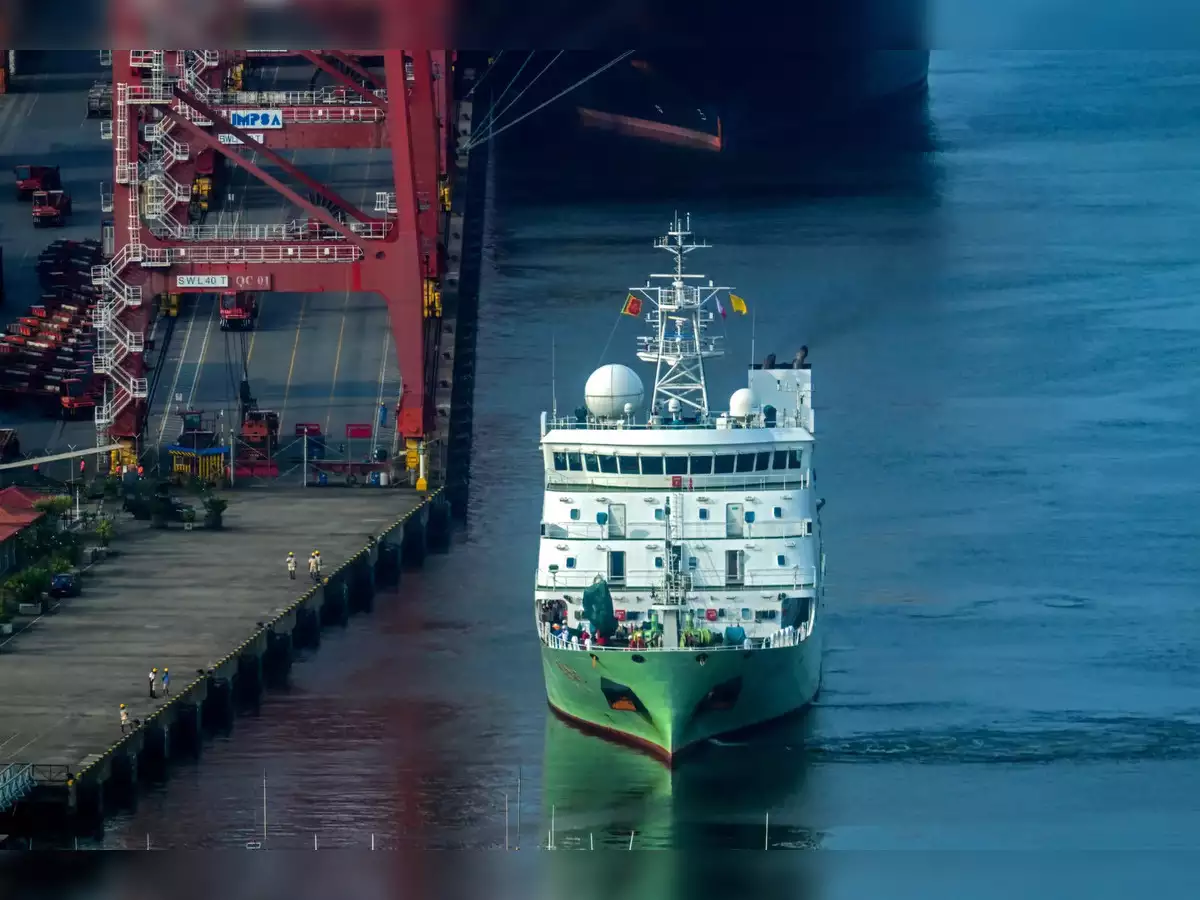The surge in the number of visits by Chinese spy ships to Sri Lanka reflects a broader strategic approach. This approach encompasses the collection of critical intelligence pertaining to strategic assets in southern India and New Delhi’s regional influence. Additionally, it includes the acquisition of data related to ecological and mineral resources in the Gulf of Mannar.
The Chinese presence and activities in Sri Lanka have raised concerns, with a particular focus on their potential implications for regional security and resource exploration. As China intensifies its engagement in the Indian Ocean, the frequency of such visits underscores the evolving dynamics in the region and the interests at play. These developments warrant ongoing scrutiny and analysis by relevant authorities and stakeholders.
According to individuals familiar with China’s strategy, discernible patterns exist in Chinese activities involving spy ships within Sri Lankan waters. They contend that Colombo has yielded to Beijing’s influence, largely due to Sri Lanka’s significant indebtedness, reflecting the effectiveness of China’s diplomatic and economic leverage in the region. This underscores the complex dynamics at play in the context of Sino-Sri Lankan relations and its implications.
China holds the majority share, accounting for 52% of Sri Lanka’s bilateral debt. Consequently, Beijing’s authorization remains pivotal for any initiatives pursued by Colombo to reorganize or manage its existing loan obligations.
China has additionally employed the Hambantota port as a refueling station for its naval vessels and other ships stationed in the Western, Eastern, and Southern Indian Ocean regions at various intervals. This utilization of the port underlines China’s maritime presence and its strategic positioning in the broader Indian Ocean area.
https://googleads.g.doubleclick.net/pagead/ads?client=ca-pub-4260686756770147&output=html&h=280&adk=3788779104&adf=727711117&pi=t.aa~a.598571314~i.9~rp.4&w=555&fwrn=4&fwrnh=100&lmt=1699547245&num_ads=1&rafmt=1&armr=3&sem=mc&pwprc=9757573268&ad_type=text_image&format=555×280&url=https%3A%2F%2Fmyind.net%2FHome%2FviewArticle%2Fchinese-spy-ships-in-sri-lanka-gathering-information-on-india-and-gulf-of-mannars-resources&ea=0&fwr=0&pra=3&rh=139&rw=554&rpe=1&resp_fmts=3&wgl=1&fa=27&uach=WyJXaW5kb3dzIiwiMTAuMC4wIiwieDg2IiwiIiwiMTE5LjAuNjA0NS4xMDciLG51bGwsMCxudWxsLCI2NCIsW1siR29vZ2xlIENocm9tZSIsIjExOS4wLjYwNDUuMTA3Il0sWyJDaHJvbWl1bSIsIjExOS4wLjYwNDUuMTA3Il0sWyJOb3Q_QV9CcmFuZCIsIjI0LjAuMC4wIl1dLDBd&dt=1699547293369&bpp=2&bdt=10830&idt=2&shv=r20231106&mjsv=m202311020101&ptt=9&saldr=aa&abxe=1&cookie=ID%3D7fe5a57d82a8dab4%3AT%3D1699508199%3ART%3D1699547255%3AS%3DALNI_MaGYladIRwUtOR_A-dj-zadnKpWdA&gpic=UID%3D00000c82a5055bbb%3AT%3D1699508199%3ART%3D1699547255%3AS%3DALNI_MY1Xeb7Wp04M3p-0Z9xPLDUdP0gjQ&prev_fmts=0x0%2C500x90%2C1263x603%2C555x280&nras=4&correlator=6317662768055&frm=20&pv=1&ga_vid=1461211754.1699508232&ga_sid=1699547293&ga_hid=1988282678&ga_fc=1&ga_cid=2080904717.1699508232&u_tz=330&u_his=1&u_h=720&u_w=1280&u_ah=680&u_aw=1280&u_cd=24&u_sd=1.5&dmc=8&adx=257&ady=1606&biw=1263&bih=603&scr_x=0&scr_y=0&eid=44759875%2C44759926%2C31079401%2C31079515%2C42531705%2C44807461%2C31078297%2C44808148%2C31078663%2C31078665%2C31078668%2C31078670&oid=2&pvsid=2123904640156171&tmod=260542268&uas=0&nvt=1&fc=1408&brdim=0%2C0%2C0%2C0%2C1280%2C0%2C0%2C0%2C1280%2C603&vis=1&rsz=%7C%7Cs%7C&abl=NS&fu=128&bc=31&td=1&psd=W251bGwsbnVsbCxudWxsLDNd&nt=1&ifi=5&uci=a!5&btvi=2&fsb=1&dtd=M
India, as a result, holds concerns regarding this situation and has actively engaged with Colombo on the matter. Officials have conveyed India’s apprehensions, and Colombo, in response, has provided assurances that it will not permit any compromise of India’s strategic interests. This exchange underscores the diplomatic discussions and assurances between the two nations concerning the situation.
The Gulf of Mannar boasts three distinct coastal ecosystems: coral reefs, seagrass beds, and mangroves. It is globally renowned for its exceptional marine biodiversity, making it one of the world’s most affluent regions in this regard. This area is renowned for its unique biological diversity, serving as a repository of global significance for marine life. With a rich array of 4,223 plant and animal species, spanning from primitive to advanced forms, the Gulf stands as one of India’s most biologically diverse coastal regions.
Situated between southern India and northwestern Sri Lanka, the Mannar Basin is believed to harbor approximately $260 billion in oil and gas reserves. Although reports indicate the initial discovery of a natural gas field in the Mannar Basin in 2011, Sri Lanka has not yet fully harnessed this valuable resource. This untapped potential could feasibly address Sri Lanka’s energy needs for the next six decades.
Last week, Sri Lanka announced that it had authorized a Chinese vessel to engage in marine research off the island’s western coast while being monitored. The decision was conveyed by the foreign ministry, despite apprehensions from India about the possibility of the vessel serving as a spy ship.
Last week, Sri Lanka allowed the Chinese research ship Shi Yan 6 to engage in a two-day research mission, despite Indian concerns about China’s influence in the region. India is wary of China’s growing presence in the Indian Ocean and its strategic influence on Sri Lanka.

